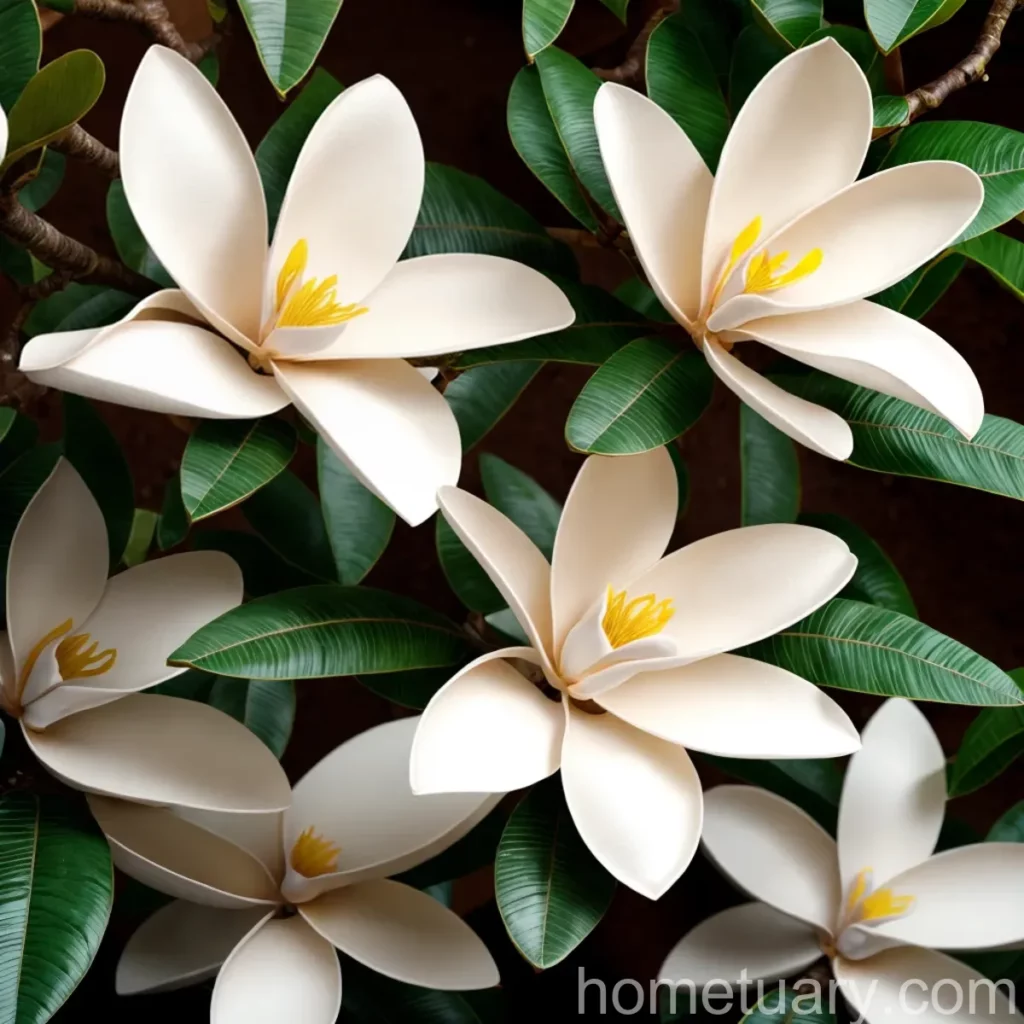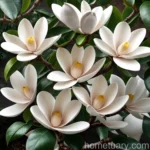Magnolia ‘Gold Star’: A Complete Guide
Magnolias are renowned for their captivating beauty and versatility, making them highly sought-after plants in both residential and commercial landscapes. In this comprehensive guide, we will delve into the delightful magnolia cultivar, Magnolia ‘Gold Star’.
What is a Magnolia?
Magnolias are a diverse genus of flowering plants that belong to the family Magnoliaceae. They are known for their captivating and fragrant blossoms, which range from creamy whites to vibrant pinks and purples. The genus encompasses a wide array of species, each with its own unique characteristics and growing requirements.
Magnolia ‘Gold Star’ is a particularly enchanting cultivar that boasts a myriad of appealing attributes. Its vibrant foliage and stunning blossoms make it a popular choice for landscaping projects and home gardens.
Plant Name: Magnolia ‘Gold Star’
Key Takeaways
Before delving into the specific details of Magnolia ‘Gold Star’, it’s essential to understand some key takeaways regarding this exquisite plant.
- Scientific Name: Magnolia ‘Gold Star’
- Common Name: Gold Star Magnolia
- Variety: Deciduous Tree
- Mature Height: 15-20 feet
- Mature Spread: 10-15 feet
- Growth Rate: Moderate
- Hardiness Zone: 5-8
- Flowering Season: Spring
Now, let’s explore the various aspects of cultivating and caring for Magnolia ‘Gold Star’.
Cultural Guidelines
Water
Proper watering is essential for the health and vitality of Magnolia ‘Gold Star. The plant’s water requirements can be summarized as follows:
- Established Plants: Once established, Magnolia ‘Gold Star is moderately drought-tolerant. It thrives in well-draining soil and should be watered during dry spells or when the soil’s moisture content becomes low.
- Young Plants: Newly planted specimens require regular watering to aid in the establishment of their root systems. Provide supplemental irrigation during dry periods to ensure optimal growth.
Sunlight
Adequate sunlight is crucial for the development of robust Magnolia ‘Gold Star specimens. Here are some important points to consider:
- Exposure: Plant Magnolia ‘Gold Star in a location that receives full sun to partial shade. While the plant can tolerate some shade, optimal flowering and foliage development occur in full sun or light shade.
- Protection: In regions with scorching summer temperatures, providing some protection from the harsh midday sun may be advantageous.
Fertilizer
Fertilizing Magnolia ‘Gold Star can enhance its overall vigor and blooming potential. Consider the following fertilizer-related guidance:
- Timing: Apply a balanced, slow-release fertilizer in early spring before new growth emerges. Refrain from fertilizing during the late summer or fall, as this can stimulate late-season growth that may be susceptible to frost damage.
- Quantity: Follow the manufacturer’s recommendations regarding the application rate and frequency. Avoid excessive fertilization, as it may lead to excessive vegetative growth at the expense of flower production.
Soil
Suitable soil conditions are imperative for the successful cultivation of Magnolia ‘Gold Star. The following soil-related guidelines are crucial:
- Composition: Plant Magnolia ‘Gold Star in well-draining, slightly acidic to neutral soil. Adding organic matter can improve soil structure and fertility, benefitting the plant’s growth and development.
- Soil Moisture: Avoid waterlogged or excessively dry soil conditions, as they can result in stress and hinder the plant’s overall health.
Pruning
Pruning plays a pivotal role in maintaining the structure and appearance of Magnolia ‘Gold Star. Here are some pruning considerations for this enchanting cultivar:
- Timing: Prune Magnolia ‘Gold Star immediately after flowering to avoid interfering with the formation of next year’s flower buds.
- Objective: Focus on removing dead, damaged, or crossing branches to enhance air circulation and maintain the plant’s aesthetic appeal.
Propagation
Interested in propagating Magnolia ‘Gold Star? The following methods can be employed to propagate this captivating cultivar:
- Seeds: Propagation from seeds is possible, but it requires patience and may not yield plants with identical characteristics to the parent specimen.
- Cuttings: Softwood or semi-hardwood cuttings can be successfully used to propagate Magnolia ‘Gold Star. Take cuttings in late spring or early summer, and employ a rooting hormone to enhance rooting success.
Container Popularity
Magnolia ‘Gold Star exhibits a natural elegance that makes it well-suited for container cultivation. Its compact size and attractive foliage enhance its allure as a container plant, enabling individuals with limited garden space to enjoy its captivating beauty.
Common Diseases
The health and vitality of Magnolia ‘Gold Star can be compromised by various diseases. Understanding these potential threats is crucial for preemptive management and intervention.
- Anthracnose: Characterized by leaf spots and dieback, anthracnose can affect Magnolia ‘Gold Star. Employing proper sanitation and fungicidal treatments can mitigate its impact.
- Powdery Mildew: This fungal disease can lead to a powdery white coating on the plant’s foliage. Ensuring proper air circulation and employing fungicidal treatments can aid in controlling powdery mildew.
Disease Diagnosis
Accurately diagnosing diseases afflicting Magnolia ‘Gold Star is essential for implementing targeted management strategies. Symptom recognition and proper identification of the causative agent are crucial components of disease diagnosis.
- Leaf Spotting: Dark, irregular spots on the foliage may indicate the presence of anthracnose or another fungal pathogen.
- Abnormal Growth: Stunted growth, distorted foliage, or premature leaf drop can be indicative of an underlying disease.
Common Pests
Pest infestations can compromise the health and aesthetic appeal of Magnolia ‘Gold Star. Being aware of the potential pests and their associated symptoms is pivotal for early detection and control.
- Scale Insects: These persistent pests can infest Magnolia ‘Gold Star, leading to honeydew secretion and unsightly plant appearances. Implementing horticultural oils or insecticidal treatments can help manage scale infestations.
- Spider Mites: These diminutive pests can cause stippling and webbing on the plant’s foliage. Regular monitoring and the application of miticides can aid in controlling spider mite populations.
Botanist’s Tips
Insights from experienced botanists can provide valuable guidance for cultivating and caring for Magnolia ‘Gold Star. Consider the following tips from seasoned experts:
- Site Selection: Carefully choose a suitable planting location that meets the plant’s sunlight and soil requirements, ensuring optimal growth and flowering.
- Pruning Practices: Adhere to proper pruning practices to maintain the plant’s form and promote vigorous growth while avoiding potential damage.
Fun Facts
Every plant has its share of intriguing and captivating facts. Here are some delightful fun facts about Magnolia ‘Gold Star:
- Heritage: Magnolia ‘Gold Star is a cultivar developed through selective breeding, combining desirable traits to create a visually stunning and resilient plant.
- Historical Significance: Magnolias, including Magnolia ‘Gold Star, hold cultural and historical significance in many regions, symbolizing strength, perseverance, and beauty.
Links to External Resources
For additional information and insights into Magnolia ‘Gold Star and magnolia cultivation in general, consider exploring the following reputable resources:
- American Magnolia Society – https://www.magnoliasociety.org/
- The Royal Horticultural Society – https://www.rhs.org.uk/
In conclusion, Magnolia ‘Gold Star is an enchanting and versatile plant that can elevate the visual appeal of any landscape or garden. By adhering to the recommended cultural practices and proactive management strategies, individuals can relish the resplendent beauty and enduring allure of this captivating magnolia cultivar. Whether used as a focal point in a garden bed or as an elegant container specimen, Magnolia ‘Gold Star is sure to enchant and inspire all who encounter it.















